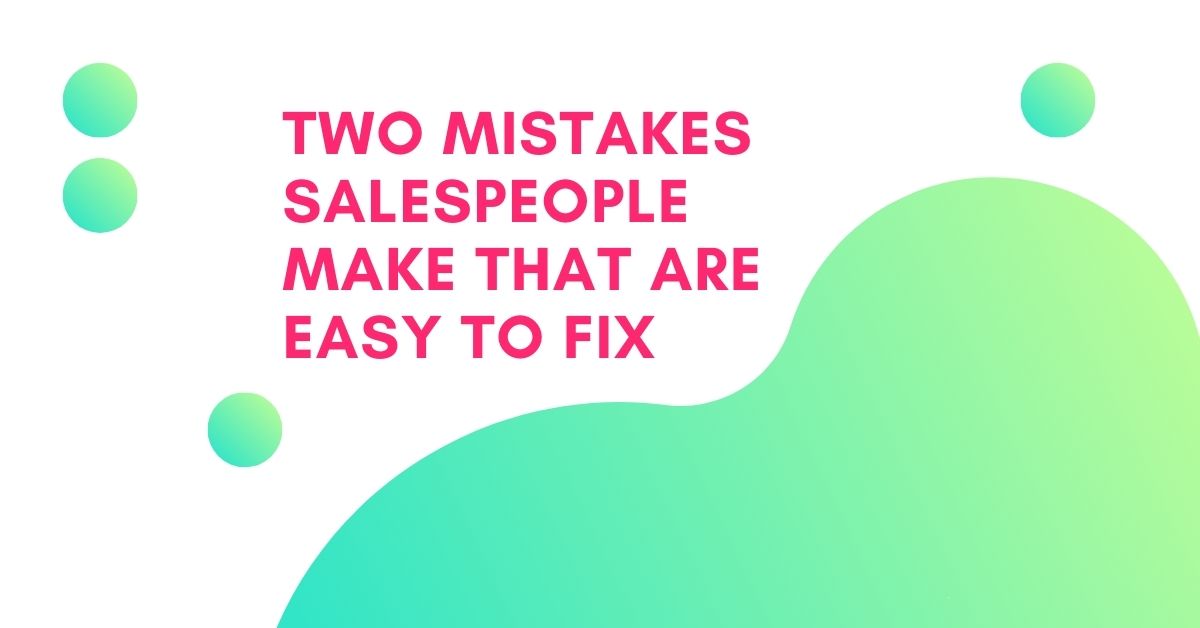Salespeople have a lot on their plate and it’s easy for them to make sales mistakes that impact their performance. Often these little mistakes add up over time. Without an engaged sales manager it’s easy for these sales mistakes to become a bad habit. Once that happens, it will be hard for the salesperson to break away from the detrimental behavior. Here’s two sales mistakes salespeople make that are easy to fix.
Not Scheduling Next Steps
Not scheduling next steps is a common sales mistake made by junior salespeople. The good news is that’s easy to fix. Every call should leave a couple minutes at the end to coordinate calendars and lock in next steps. When a salesperson doesn’t do this, this almost always causes problems.
If a salesperson is running an intro call, they must schedule next steps while the prospect is on the call. The salesperson will improve their chances of successfully moving this prospect to the next stage in the sales process. They’ll also get a good idea of what the prospect thinks. Sometimes a prospect can appear to be a fit and love your offering when they’re merely being nice. This will quickly clear up any miscommunication. If a salesperson asks and the prospect pushes the call off for a few months when the salesperson thought the call went well, they need to understand why this isn’t a priority. Or they need to quickly figure out how to make it a priority.
Additionally, by leaving time schedule next steps at the end of the call, it can provide an opportunity to figure out who else needs to be included on the next call if that hasn’t been discussed. Most B2B sales require multiple decision makers and pulling in people who can influence the sale puts a salesperson in a better position to close the deal.
It cannot be emphasized enough that salespeople must schedule next steps at the end of every call while the prospect is on the phone. Confirm the time and date, add other people who should be included, and send the invite immediately. Scheduling next steps while a prospect is on the call will shorten sales cycles, improve your close rate, and save you a lot of time hunting down prospects.
Slow To Respond
An inbound lead comes in. You’re buried in emails and you need to update Salesforce. A co-worker Slacks you asking what your thoughts are on Seismic vs. Highspot. It’s been ninety minutes and you finally get around to responding to the inbound lead.
What has happened minute by minute is that you’ve decreased the chances of converting that lead into a meaningful conversation. You have increased the chances of not getting a response when you follow up with them because you were slow to respond to the inbound lead. Inbound leads are gold and should be treated as high priority.
Firms that tried to contact potential customers within an hour of receiving a query were nearly seven times as likely to qualify the lead (which we defined as having a meaningful conversation with a key decision maker) as those that tried to contact the customer even an hour later—and more than 60 times as likely as companies that waited 24 hours or longer.
https://hbr.org/2011/03/the-short-life-of-online-sales-leads#:~:text=Top%20Lead%20Generators&text=Although%2037%25%20responded%20to%20their,30%20days%2C%20was%2042%20hours.
The key takeaway is that the sooner you contact someone, the better odds you’ll have for converting that lead. This is backed up by multiple studies. In fact, some studies have shown that prospects will go with the first vendor who responds to them.
Sales team should set a goal to respond to an inbound lead within the first five minutes it arrives. This is easy to do if you prioritize it. There is scheduling software that can make it easier to book meetings with inbound leads. Not only are you avoiding this common sales mistake but you’re also providing an excellent customer experience. If you haven’t been focusing on following up as soon as possible with an inbound lead, you will see a dramatic improvement in your connect rate with inbound leads once you do. Prospects will thank you for being so quick to respond and you’ll start off on the right foot.



